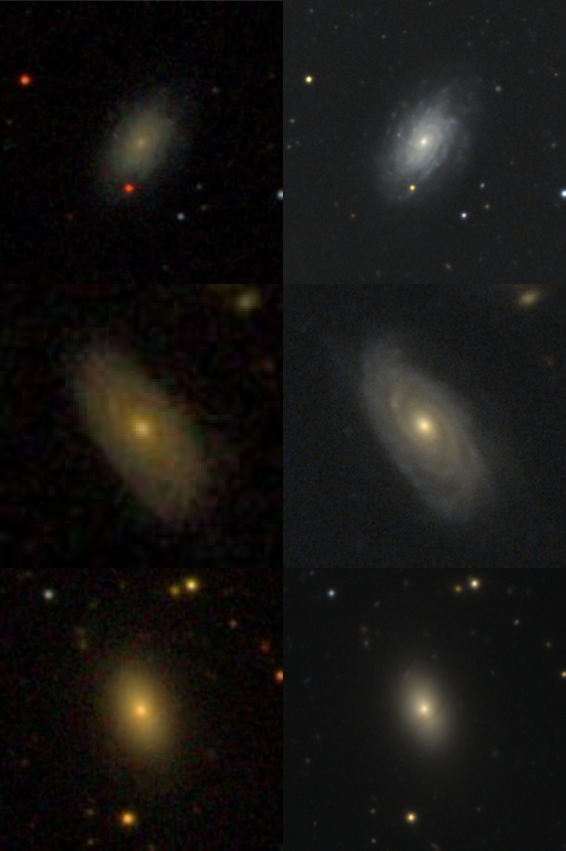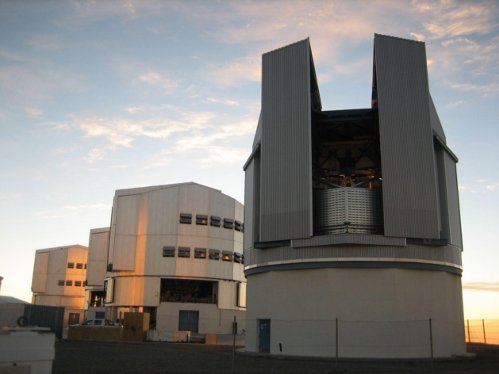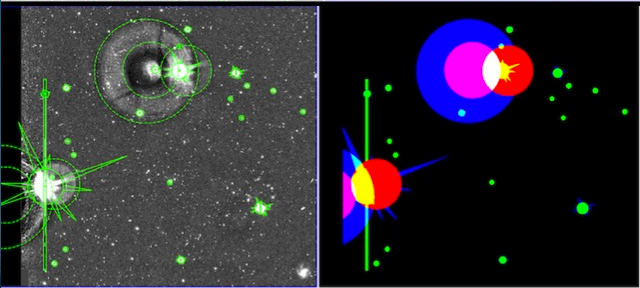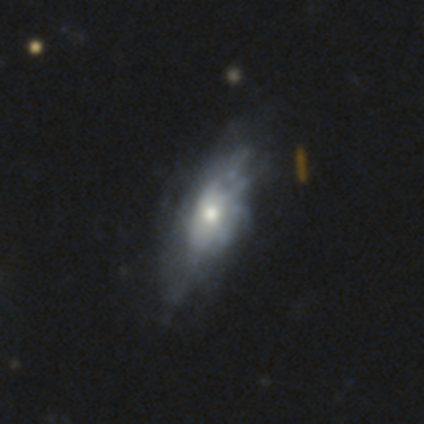New images for Galaxy Zoo from GAMA-KiDS! Jan 30,2017
-
 by
Budgieye
moderator
by
Budgieye
moderator
Blog: https://blog.galaxyzoo.org/2017/01/31/new-images-for-galaxy-zoo-from-gama-kids/
The scientific teams behind GAMA and KiDS have been working closely to
put together this new set of images. Galaxies have been selected from
a catalogue produced by the GAMA Survey and images have been
constructed based on observations from KiDS. While some of these
galaxies have already been looked at by Galaxy Zoo citizen scientists
before using their Sloan Digital Sky Survey (SDSS) images, the
improvement in the resolution and depth of KiDS images over SDSS
imaging is remarkable. With this new GAMA-KiDS data set we hope to be
able to study the very faintest structures within galaxies, as well as
more accurately classify features which may have been missed before.
Take a look at the image below to see how much clearer the new images
are!gamazoo This image compares SDSS images (on the left) with those from
GAMA-KiDS (right) for three example galaxies: G107214, G298570 and
G551505. Our new images reveal a lot more detail!We’re really excited about getting classifications for these new
images, and we hope you are too! We’re more than happy to talk about
any interesting galaxies you may come across and to answer any
questions you may have. Until then, enjoy, and thank you for your
help!– by Dr Lee Kelvin, on behalf of the GAMA and KiDS teams
.............SDSS..................................................................... GAMA-KiDS....................

Posted
-
 by
leeskelvin
scientist
by
leeskelvin
scientist
Hello Zooniverse! It's amazing seeing so many classifications and comments being left on these images already! I can say on behalf of the entire GAMA-KiDS teams that we're all extremely proud to be working alongside the Galaxy Zoo community on this project, and very excited to begin analysing these data.
Myself and many of my colleagues will be here regularly reading your comments and answering questions if we can. Please feel free to message me if you have any specific questions - I'm more than happy to help!
All the best,
Lee KelvinPosted
-
 by
ElisabethB
moderator
in response to leeskelvin's comment.
by
ElisabethB
moderator
in response to leeskelvin's comment.
Hi Lee and welcome to the Zoo ! 😄
Really looking forward to classifying these images ! They look amazing ! 😄
Els
Posted
-
 by
Missybee35
by
Missybee35
I was super excited tonight to see there are new galaxy images from another source! They are beautiful! Thank you for allowing us citizen scientists the opportunity to see them and be involved with your project.
Posted
-
 by
leeskelvin
scientist
by
leeskelvin
scientist
It's an honour to be working with the Galaxy Zoo community, and something we in GAMA have been aiming to do for a very long time.
Although, I've just realised (based on the title to this thread) that we're working 10 years in the future already - very impressive!
Posted
-
 by
Budgieye
moderator
by
Budgieye
moderator
Ooops. Edited.
Posted
-
 by
Budgieye
moderator
by
Budgieye
moderator
post under construction
KiDS, the Kilo-Degree Survey images the southern sky and is located in South America.
 VLT Survey Telescope (VST), located at the ESO Paranal Observatory,
VLT Survey Telescope (VST), located at the ESO Paranal Observatory,
Coverage KiDS will map 1500 square degrees of the night sky, some in the north sky, some in the south.
It is not finished yet? http://kids.strw.leidenuniv.nl/progress.php
KIDS-N looks at a large patch in the northern hemisphere, where SDSS, and many Hubble Space Telescope surveys such as COSMOS and Hubble Deep Field, and the Groth Strip.
KIDS-S looks at a large patch in the southern hemishere, where DECaLS has imaged, as well as Hubble Space Telescope surveys such as...
KiDS will map 1500 square degrees of the night sky in four broad-band filters (u, g, r, i).
These are 2-colour images, cyan and amber. Cyan is blue for starforming. amber is for the red stars. But green will be poorly represented, more as a yellowish.
It has more resolution than SDSS, and less than the CFHT. I'm not sure about DECaLS, maybe about the same? and less than HST.
http://kids.strw.leidenuniv.nl/index.php
http://kids.strw.leidenuniv.nl/overview.php#comparisons
Technical specificationshttp://kids.strw.leidenuniv.nl/techspecs.php Exposure time is up to 1000 sec
Artifacts
A typical SSO [Solar System Object] track in the KiDs survey.

- SEARCHING FOR SOLAR SYSTEM OBJECTS (SSO) IN THE KIDS SURVEY https://www.cosmos.esa.int/web/esac-trainees/2016-projects
https://talk.galaxyzoo.org/#/subjects/AGZ000dla3
Panchromatic Swarp Imager A multi-band image cutout routine for GAMA objects http://cutout.icrar.org/psi.php
Posted
-
 by
Budgieye
moderator
by
Budgieye
moderator
KiDS artifacts

http://kids.strw.leidenuniv.nl/DR2/images/mask_detail.png
![http://kids.strw.leidenuniv.nl/DR2/images/foibles_panels.png]
(http://kids.strw.leidenuniv.nl/DR2/images/foibles_panels.png)http://kids.strw.leidenuniv.nl/DR2/data_quality.php
Posted
-
Wow! GAMA-KiDS really brings these galaxies to life!
Posted
